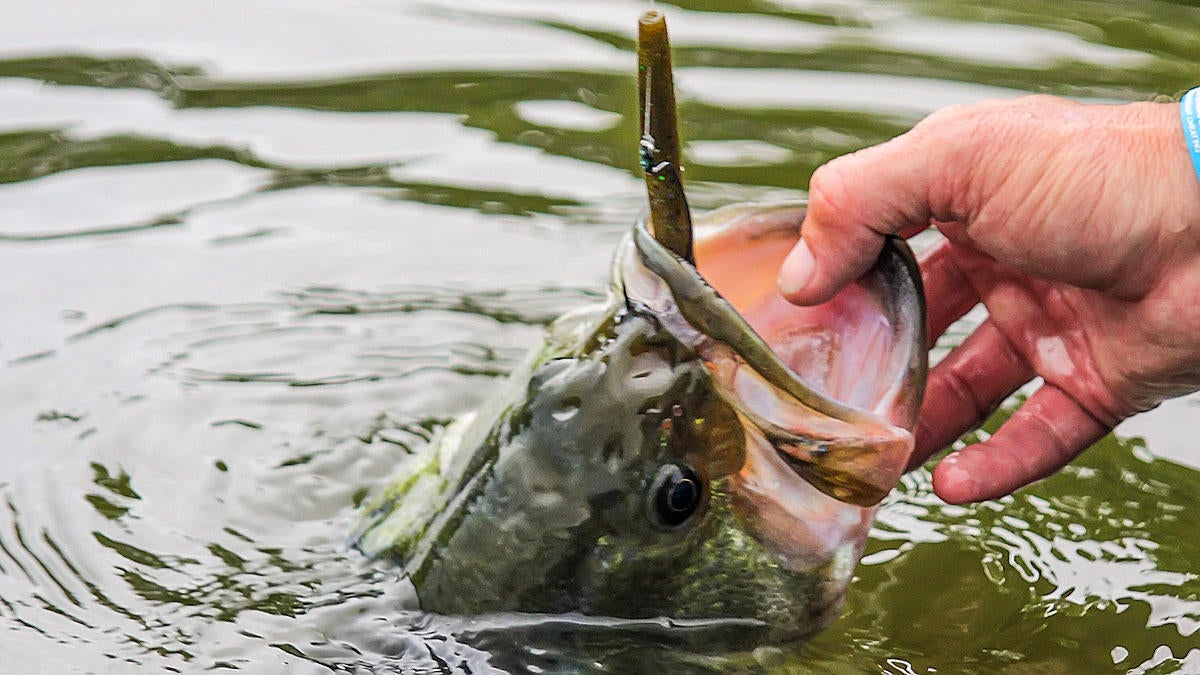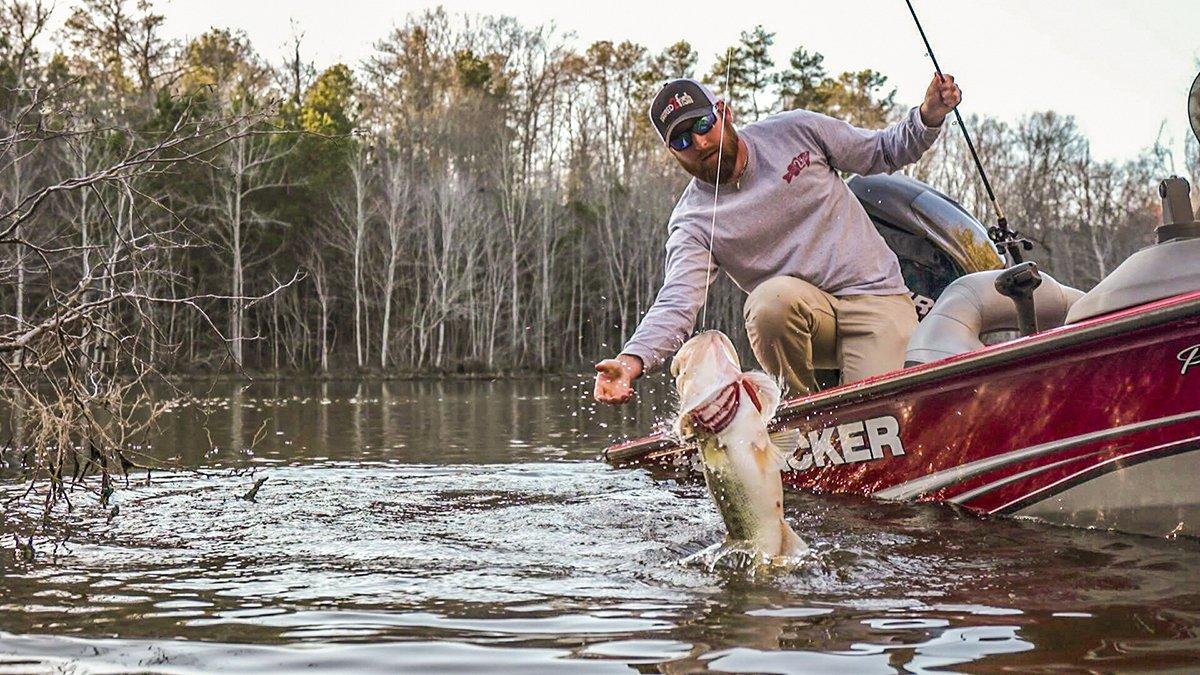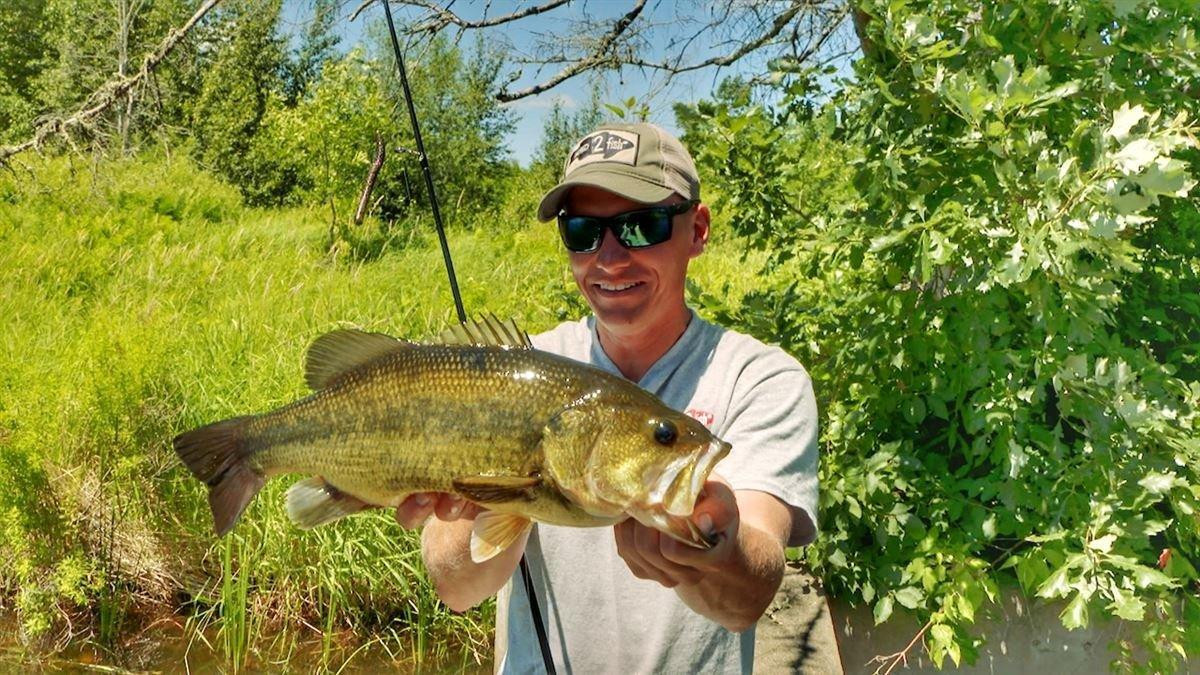Whenever I fish a new lake or pond from the bank, I will always go through a process to understand the features of the lake. This helps my bass fishing tremendously and allows me to fish a lot faster and more effectively on subsequent outings. It’s much like graphing a lake bottom with your electronics. The only difference is you do it with these simple tips with a rod and reel and a few lures.
The five steps I consider when trying to fish a new body of water from the bank include the following:
- Count down your lures
- Fan cast areas
- Feel with contact lures
- Underwater cover is usually better
- Fish the areas effectively
Count Your Lures Down
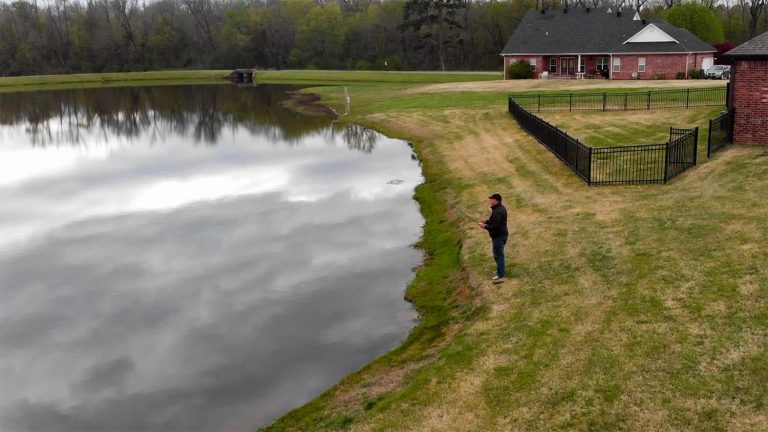
Counting down your lure is as simple as it sounds. Make a cast and then count 1-2-3 each second to see how many seconds it takes to hit the bottom. Usually a lure around 1/4 to 3/8 ounce will fall roughly 1 foot per second on good sized line. If you’re using really light line a 1/8 ounce lure might fall 1 foot per second. But it doesn’t have to be exact. Use it for reference.
If you cast way out to the middle and it takes 10 seconds to hit bottom. You know it’s roughly 10-feet deep, give or take a foot or so. If you cast half way out and it takes 5 seconds you know it’s 5-feet deep. But now you also know the bank gradually slopes out to deeper water. You can do this all over the lake and understand where the steeper and more gradual drops are.
More importantly you can find features like high spots out away from the bank which are very key on small bodies of water.
Fan Cast Areas Methodically
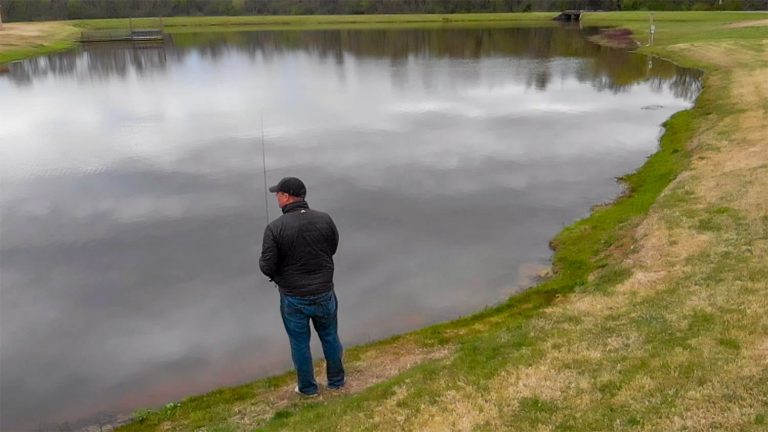
Again fan casting is a simple concept where you methodically slice up an area from where you are standing. Start casting to the right. Now make your next cast a few feet to the left then the next one is a few feet more and so on.
You can dissect the lake left to right. But you can also dissect it forward and back. So I know there is a high spot a little to my left and about half way out. Then you start to piece together a map. Well I know there is a high spot here and a ditch here and then they roll off into this deeper hole here.
Getting the lay of a body of water will also help you to break it down seasonally.
Feel with Contact Lures
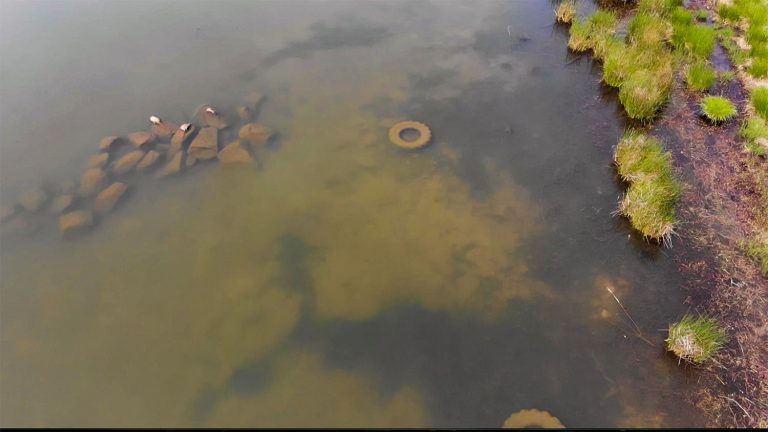
When we talk about contact lures, we’re referring to baits you can drag along the bottom and transmit back to your rod and hand what you are feeling. A 1/2 ounce jig, a Carolina rigged lizard or a Texas rigged worm are all good contact baits for feeling the bottom.
You will learn to feel the difference between hard rocky areas that will catch and scrape. Or weedy areas that will grab but you can snap the bait out easily. Or find big isolated pieces of cover like rock piles, laydowns and stumps you can see above the surface and even just hard spots in the middle of the lake others will likely miss.
This has helped me more than anything. On a couple of the lakes I will fish only one or two times a year from the bank. I know where the high spots are in the lake. This is often where the bigger bass in those lakes spawn because it is away from where people walk. On one of the lakes, I have caught three 8-pound bass off of one high spot I found in the middle of the lake just dragging a Texas rig around. I don’t normally catch them on the Texas rig but I found it that way.
Underwater cover is usually better

The cover everyone can see gets fished by everyone and the fish are often more spooky. But the cover you find counting down, fan casting and dragging contact baits through can be the best spots on the whole lake because they simply receive the least amount of pressure. Again don’t be married to one presentation. The key was to find these sweet spots on an unmapped body of water. The next part is to figure out how to catch those fish.
Fish the areas effectively

I have found that a wacky rigged Yamamoto Senko is hard to beat in the spring on these small bodies of water. It’s not a good search bait though. So you need to have a good understanding of how the lake lays and the likely fish holding spots. But in these often clear water lakes, knowing the precise location to cast and using an ultra natural presentation like a Senko is very hard to top.
I often will stay way back off the bank and cast to a piece of cover that is along the bank. My brother-in-law caught a 10-pounder by us doing that on a lake he lives on. We stayed way back up a hill back from the laydown the fish was on that was right on the bank and made long casts to it with very light baits. We had no idea the fish living on that piece of cover would be 10 pounds, but that effective approach gave us a chance to catch his personal best.
I’ve also thrown big glide baits like the Megabass iSlide over the top of the isolated pieces of cover I’ve found in the middle of these lakes using fan casting, contact and count down with great success. You can see a video of one of my Megabass iSlide catches from the bank.
Take the time to understand the features of the lake

So make a lot of casts with your contact baits, make mental notes or even take pictures with your phone and make notes on them so you can come back later with the most effective presentations for that cover and location at a later time. I have spent a whole day scouting and them come back the following day and caught some true giants because I was willing to seek out the cover no one else could see or find with a methodical approach.
You will catch fish along this process. But having these mental notes might help you more in another season when the fish behaviors change and they move around the body of water. So keep notes of your high spots, hard spots, isolated cover off the bank and how the fish related to different presentations in those areas. You’ll be on your way to finding the biggest fish in that body of water.






